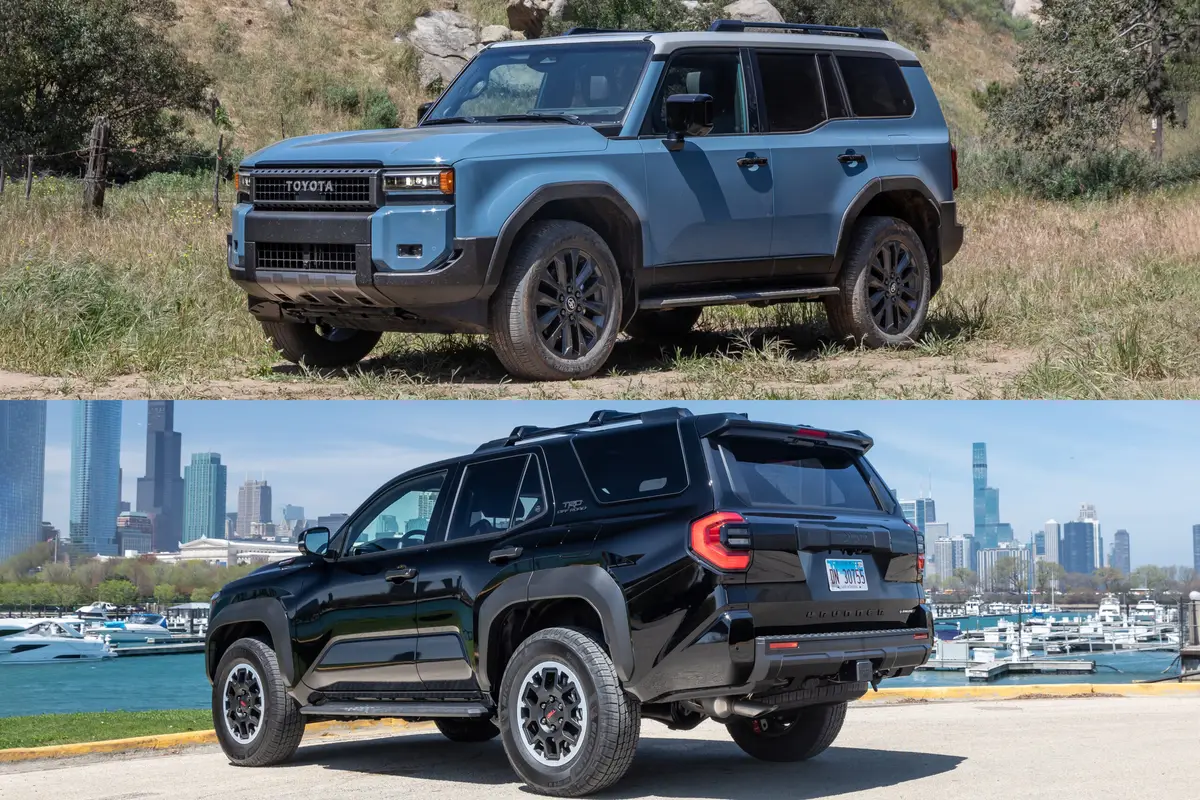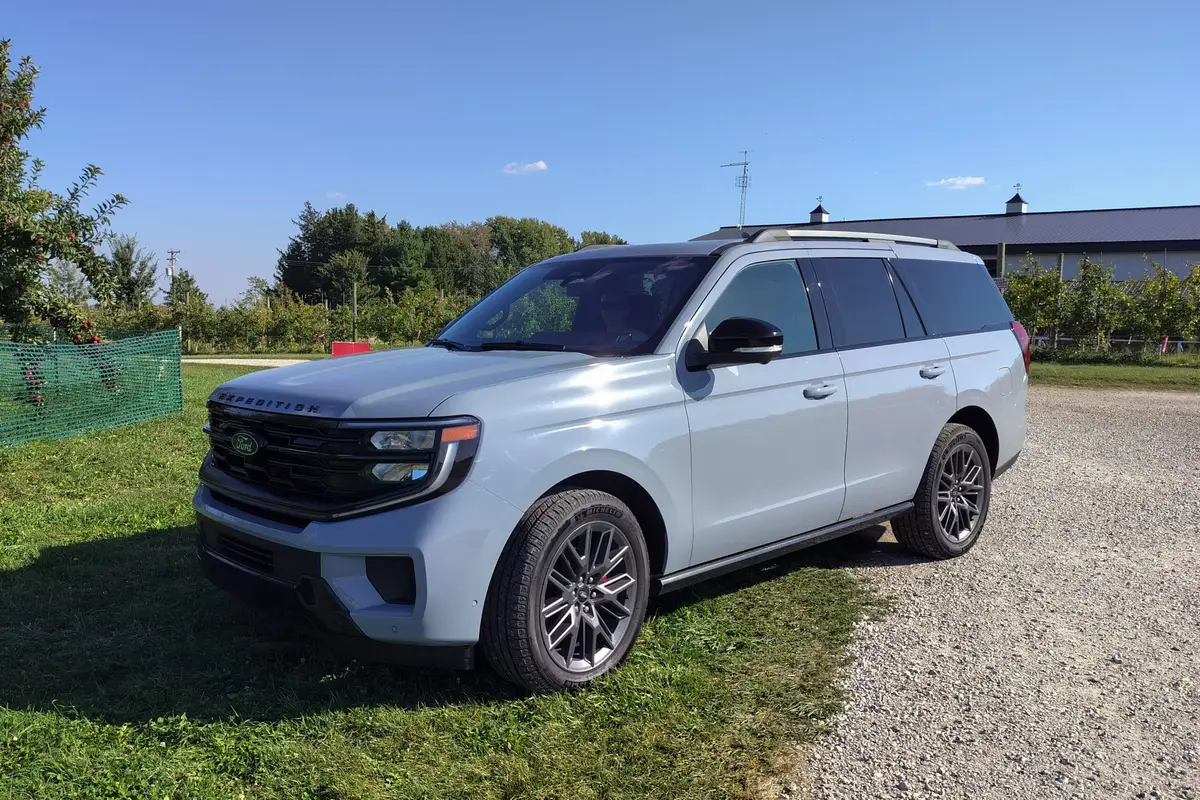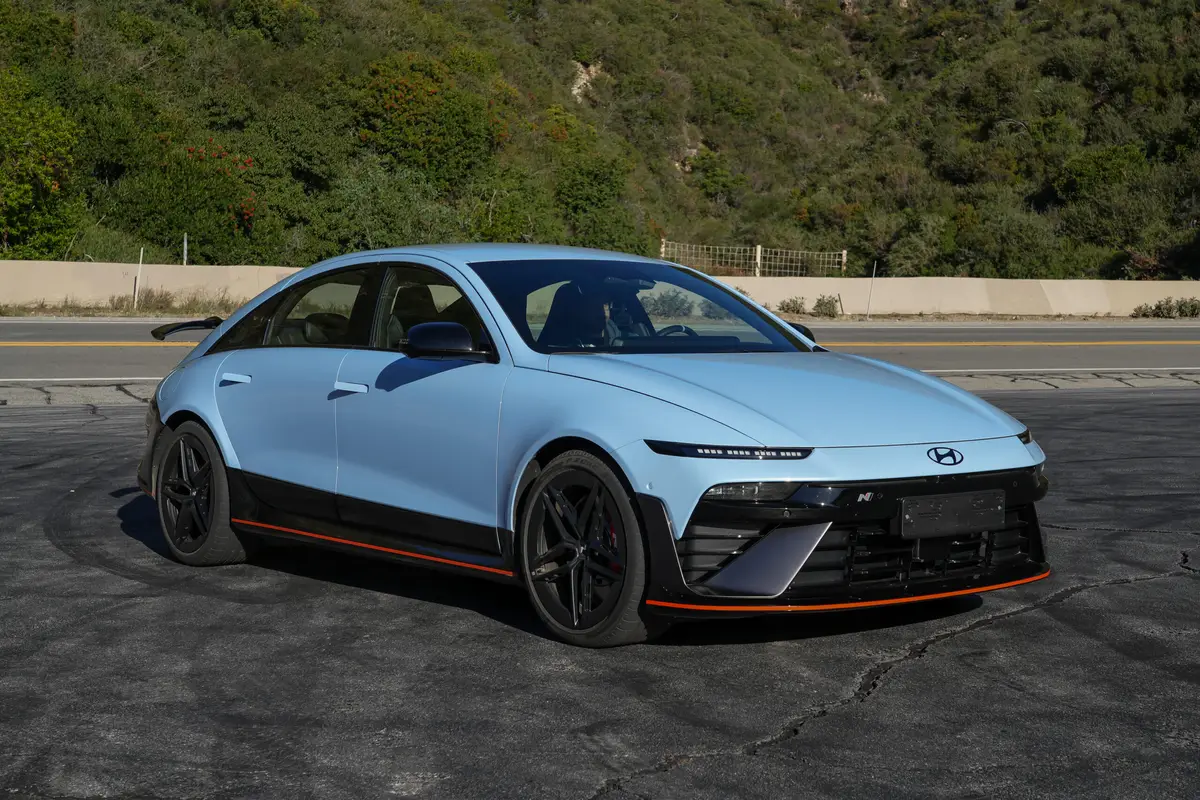Is the 2022 Ford F-150 Lightning EV a Good Pickup Truck? 6 Things We Like, 5 We Don't
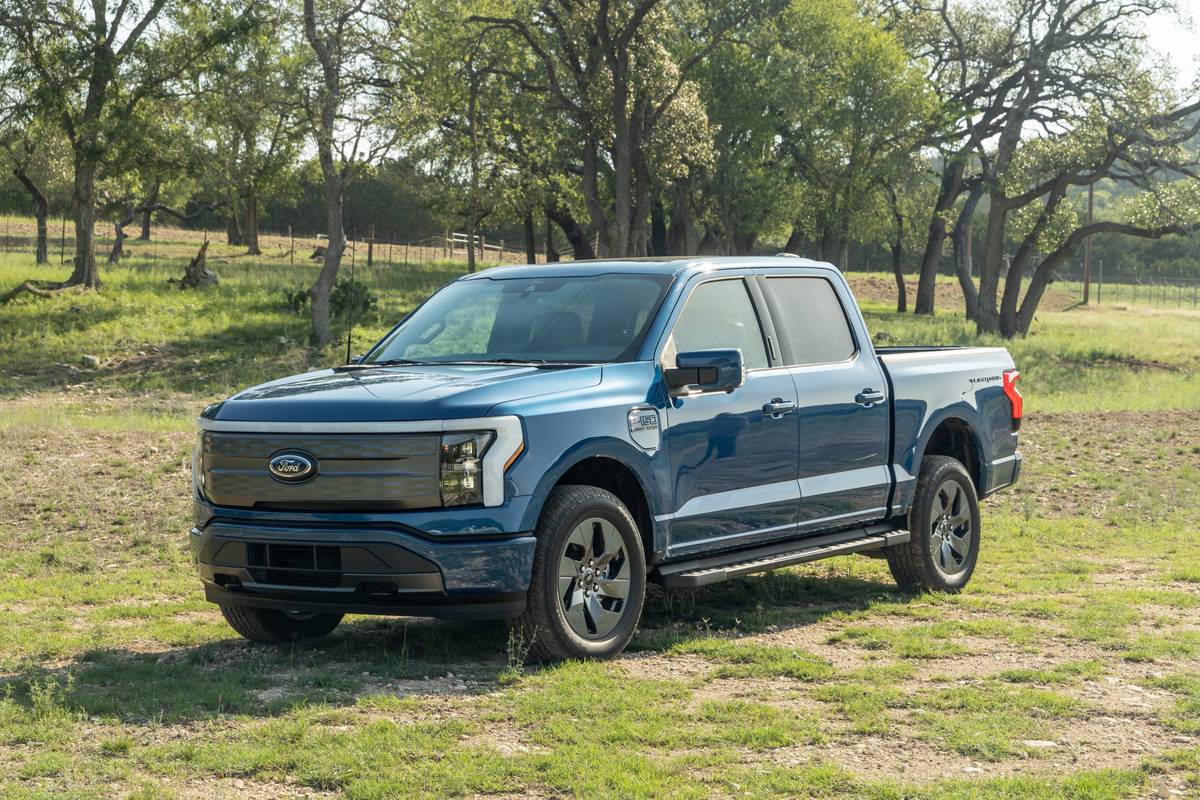
With the launch of the 2022 Ford F-150 Lightning, electric vehicles just got a whole lot more mainstream. Far from some of its unconventional and funky-looking electric brethren, the Lightning looks and drives largely like a conventional gasoline-powered F-150. Ford evidently reckons that the world is ready for an electric version of the top-selling vehicle in the U.S. — as long as it doesn’t mess much with the rest of the winning formula.
The early reports are in, and Ford appears to have a hit. The Lightning sold out shortly after it went on sale, and the waiting list now stretches well into 2023. The demand is obviously there, and our first experience with one indicates those early adopters may be on to something: The Lightning is remarkable, at least in part, for how unremarkable it is. Its driving experience, cabin layout and day-to-day livability will be familiar to anyone who has driven any recent F-150, while the electric version brings some added tech and capability.
But as one might expect, there are some things about this electric pickup truck we’re not so crazy about. For Cars.com reviewer Brian Normile’s full assessment, hit the link above; for the condensed version, keep reading. Here are six things we like about the 2022 Ford F-150 Lightning and four things we don’t:
Things We Like
1. It’s No Slouch
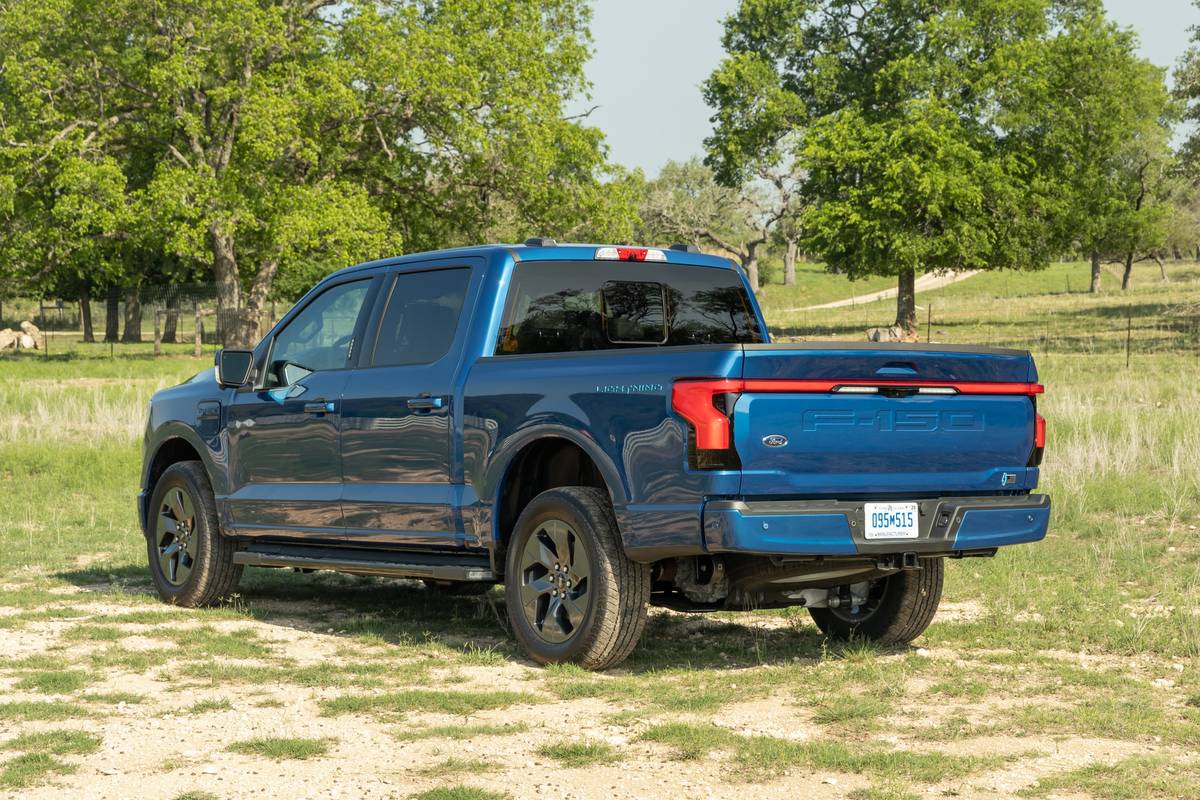
The Lighting has plenty of the capability pickup buyers are looking for, with a claimed towing capacity of 10,000 pounds, a not-unrespectable 2,235 pounds of payload capacity and standard four-wheel drive. It’s also ridiculously quick, with a claimed 0-60 mph acceleration time of as little as 4.5 seconds, configuration depending. More impressive is that the power comes on in a relentless, smooth rush, making it feel even faster from behind the wheel.
2. New, Yet Familiar
One of the most appealing things about the F-150 is how familiar it looks and feels to drive. With few of the funky styling tweaks and controls so common in EVs, the Lightning comes across as more like any other F-150 than something alternatively powered and exotic. That should help sales with its target audience.
3. No Loss of Interior Room

The Lightning’s battery pack rides under the occupant compartment floor, but unlike some EVs, it doesn’t interfere with occupant room. Ford claims the cabin is just as roomy as any F-150, and our experience bears that out. The Lightning even retains the flip-up rear seat with compartmentalized storage found in conventional F-150s.
4. Funky Frunk
With no engine taking up space in the front, the F-150 Lightning gets a large, secure storage compartment with a 400-pound weight capacity under what would be the hood of a conventional pickup truck. As a bonus, the modestly named Mega Power Frunk is packed with trick features including four 120-volt power outlets and two USB ports. It’s also water-resistant, with drain plugs for carrying really funky stuff that needs to be cleaned out with a hose.
5. Personal Power Plant
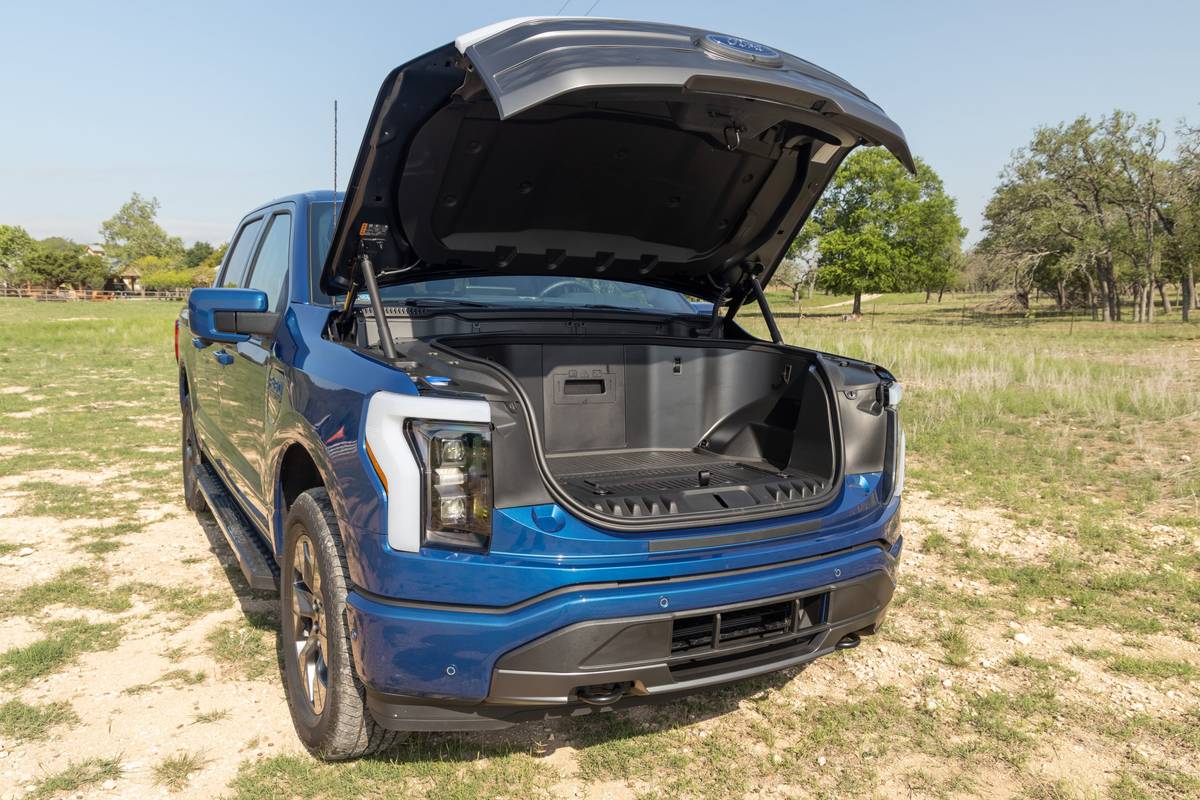
The F-150 Lightning is not the first EV capable of doubling as an alternative home power source in the event of an outage, but it brings a significant amount of juice to the party. When equipped with an optional 80-amp charging station and other equipment, Ford claims the Lightning can completely power a home for up to three days. If that power is rationed appropriately, Ford says the Lightning can keep the lights on for up to 10 days.
6. At Home With the Range
Ford offers two battery choices with the Lightning: the standard-range with 230 miles of range and an extended-range unit rated for 320 miles of range in mid-level trims (where it’s optional) and 300 miles in the top Platinum trim (where it’s standard). That should be enough to keep all but the most range-anxiety-prone drivers happy.
More From Cars.com:
- 2022 Ford F-150 Lightning Surpasses Goals With 320-Mile Maximum Range
- How the 2022 Ford F-150 Lightning Can Power Your Home for Days
- Ford Amps Up F-150 Lightning Production to Meet Demand
- Electric Cars With the Longest Range
- Here Are the 11 Cheapest Electric Vehicles You Can Buy
Things We Don’t Like
1. About That Towing Capability
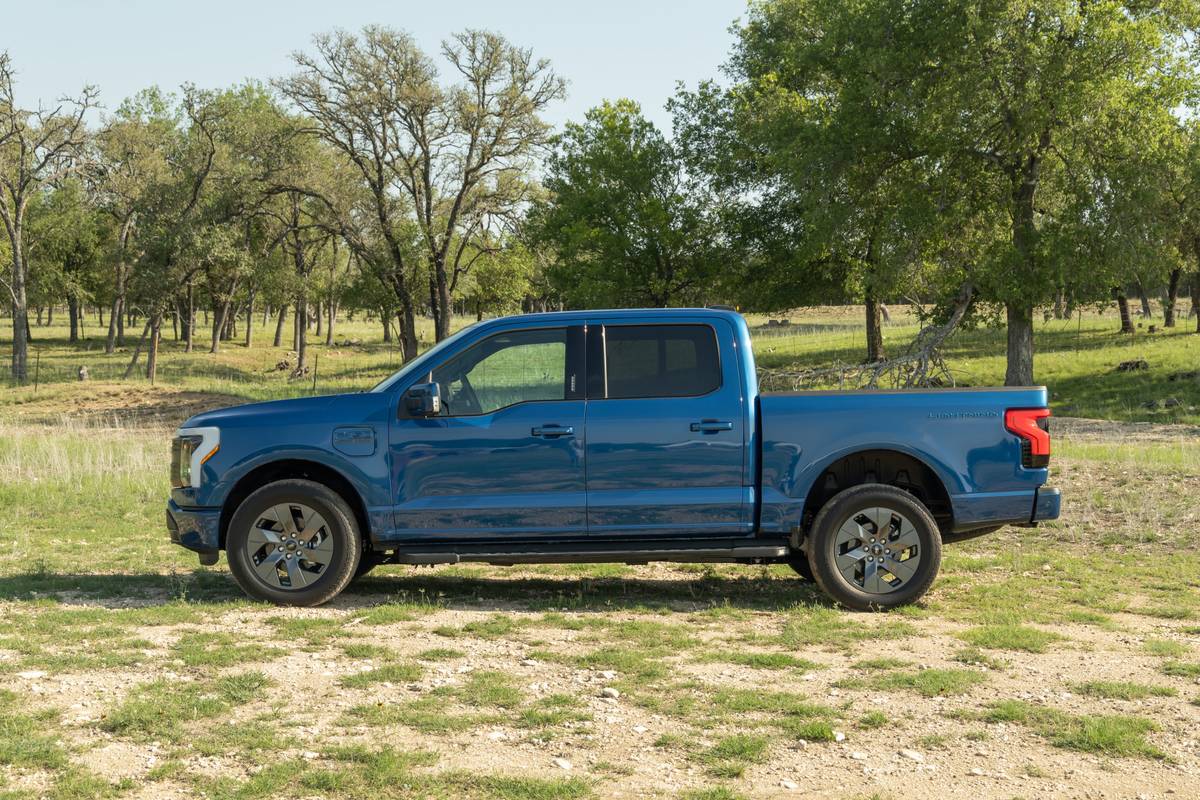
For buyers serious about towing, it’s worth mentioning that towing a trailer has a big impact on the Lightning’s range. That comes as no great surprise, but we can’t yet get too specific until we have an opportunity for more in-depth testing.
We did have a chance to try pulling an 8,300-pound boat and trailer using a Lightning XLT with the extended-range battery, which showed about 80 miles of range remaining with a half-charged battery — much less than its rated maximum of 320 miles. That means towing would likely require stopping to recharge quite a bit more often than driving without a trailer.
2. Pedal Feel
Most EVs give up some traditional brake-pedal feel compared to a conventional vehicle, partly in favor of regenerative braking to help with charging, but we found the brakes in the F-150 harder to modulate than most. There’s plenty of stopping power, it’s just tricky to make smooth stops. Throttle modulation can also be a challenge, particularly in one-pedal driving mode.
3. Big-Screen Blues
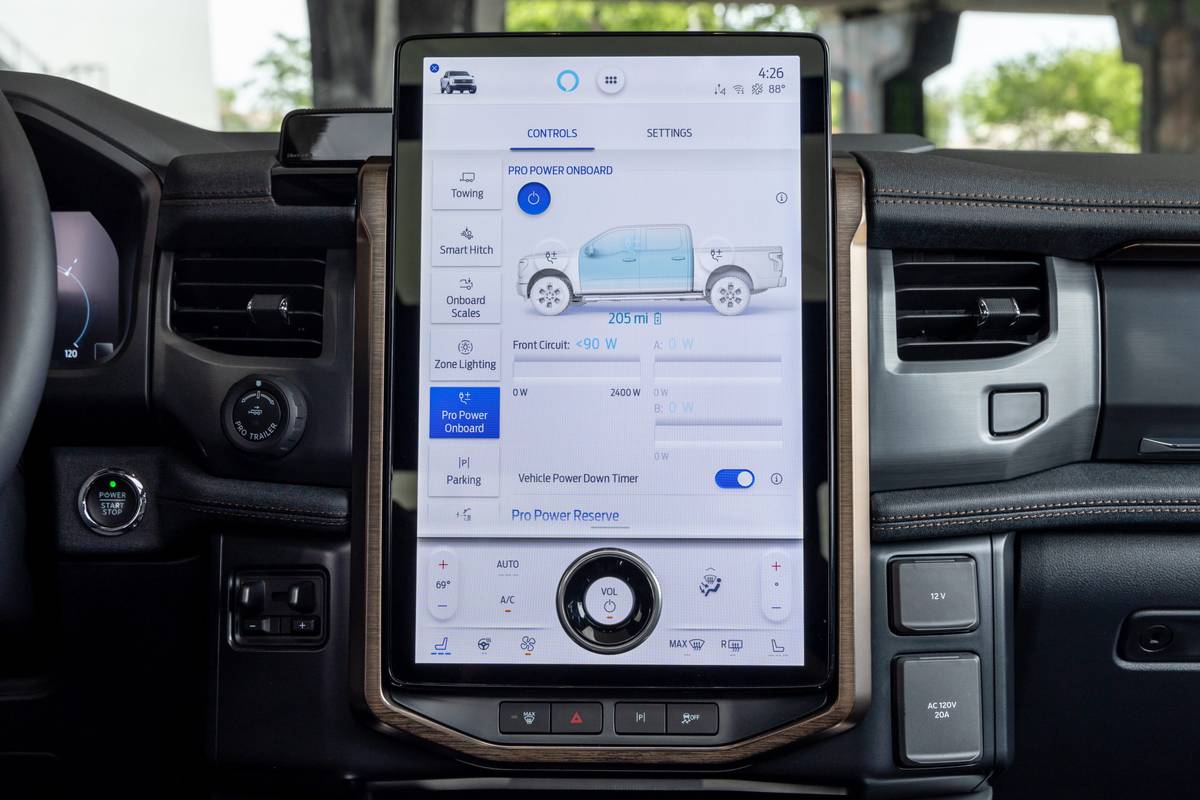
Lower Lightning trims use a 12.4-inch touchscreen and control layout similar to that found in a conventional F-150. Upper trims, however, get the latest version of Sync 4A, with a giant vertically oriented 15.5-inch touchscreen in the center of the dash. While the screen is vivid and responsive, it eliminates some physical controls, including those for oft-used functions such as seat heaters. Worse, we fear this signals a trend toward similar screens in upcoming Ford vehicles.
4. Charging Challenges
Using a 30-amp Level 2 home charger, a Lightning with either battery adds about 13 miles of range per hour; upgrading to Ford’s 48-amp Level 2 charger raises that to more like 20 miles of range per hour. Stepping up to Ford’s 80-amp Charge Station Pro can add up to 30 miles of range an hour to extended-range variants. All Lightnings also have 150-kilowatt DC fast-charging capability, which can add up to 54 miles of range in 10 minutes.
While these aren’t horrible numbers, they trail competitors including Rivian’s R1T and the new GMC Hummer EV pickup.
5. Electrical Costs
A base F-150 Lightning in Pro trim starts at around $40,000 (all prices include destination).There is no Pro trim with a conventional F-150, but a gas-powered base F-150 XL is a lot cheaper than any Lightning at a starting price of $37,680 with 4WD. A lot of the price difference can be offset with a $7,500 federal tax credit, at least for now, but the Lightning’s price premium is more significant with higher trims. Our tested extended-range XLT came to $76,384, and a top-trim Platinum checks in at more than $90,000.
Related Video:
Cars.com’s Editorial department is your source for automotive news and reviews. In line with Cars.com’s long-standing ethics policy, editors and reviewers don’t accept gifts or free trips from automakers. The Editorial department is independent of Cars.com’s advertising, sales and sponsored content departments.
Featured stories
